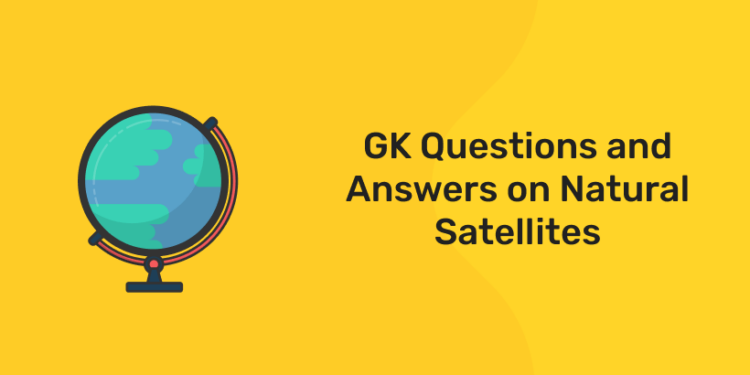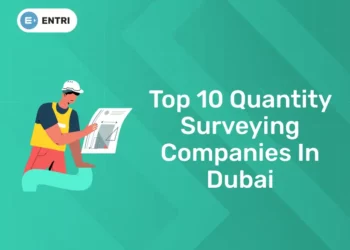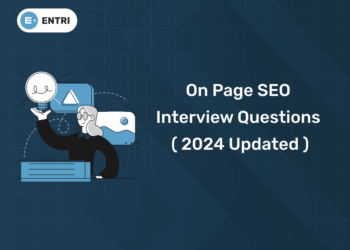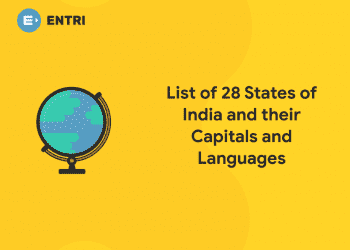Table of Contents
A natural satellite as in the most general usage, an astronomical body that revolves a planet, dwarf planet, or small Solar System body or sometimes another natural satellite. Natural satellites are commonly colloquially called to as moons, a derivation from the Moon of Earth. There are 171 moons, or natural satellites, revolving the planets in our solar system. The Earth, Mars, Jupiter, Saturn, Uranus, and Neptune have 1, 2, 66, 62, 27, and 13 moons, respectively. The planet Uranus has 27 known moons, most of which weren’t known until the space age. They range from Titania, 981 miles or 1,579 kilometers in diameter, to tiny Cupid, only 11 miles or 18 km in diameter. A satellite is an object that orbits around a larger object. Earth is a satellite because it moves around the sun. The moon is a satellite because it moves around Earth. Earth and the moon are termed as “natural” satellites. The smallest moon is Deimos, at Mars, only seven miles in diameter, although its size now is estimated by the small shepherd moons discovered by Cassini at Saturn and by others yet to be numbered and named in the rings around Jupiter, Saturn and other giant gas planets in the outer Solar System.
A natural satellite is a non-artificial celestial body that revolves another. Satellites are generally smaller in size than the body it is continually circling. This movement is due to the attraction shown by the force of gravity of the larger body on the smaller one. The bird’s-eye view that satellites have allows them to see large areas of Earth at one time. This ability means satellites can acquire more data, more quickly, than instruments on the ground. Satellites also can see into space better than telescopes at Earth’s surface. There are two different kinds of satellites – natural and man-made. Examples of natural satellites are the Earth and Moon. The Earth revolves around the Sun and the Moon rotates around the Earth. A man-made satellite is a machine that is launched into space and orbits around a body in space The Solar System is collection of planets and their satellites; many comets, asteroids, and meteoroids; and the interplanetary medium. Our Solar System has numerous natural satellite. In this article, insights on GK Questions and Answers on the Natural Satellite of the Solar System in the form of multiple choice questions which strengthen the knowledge of candidates who are preparing for the examinations like UPSC, State Services, IBPS, SBI, SCC, Railways etc. The interested and eligible candidates are advised to stay updated regarding the various aspects of the examinations. All the notifications and information will be released by the official website of the examination. Candidates are expected to stay updated and plan their preparation accordingly.
Take topic-wise practice papers, free mock tests on the Entri app today
Natural Satellites – Significance
A natural satellite is a non-artificial celestial body that revolves another. Satellites are generally smaller in size than the body it is continually circling. This movement is due to the attraction shown by the force of gravity of the larger body on the smaller one. The bird’s-eye view that satellites have allows them to see large areas of Earth at one time. This ability means satellites can acquire more data, more quickly, than instruments on the ground. Satellites also can see into space better than telescopes at Earth’s surface. A natural satellite as in the most general usage, an astronomical body that revolves a planet, dwarf planet, or small Solar System body or sometimes another natural satellite. Natural satellites are commonly colloquially called to as moons, a derivation from the Moon of Earth. There are 171 moons, or natural satellites, revolving the planets in our solar system. The Earth, Mars, Jupiter, Saturn, Uranus, and Neptune have 1, 2, 66, 62, 27, and 13 moons, respectively. The planet Uranus has 27 known moons, most of which weren’t known until the space age. They range from Titania, 981 miles or 1,579 kilometers in diameter, to tiny Cupid, only 11 miles or 18 km in diameter. A satellite is an object that orbits around a larger object. Earth is a satellite because it moves around the sun. The moon is a satellite because it moves around Earth. Earth and the moon are termed as “natural” satellites. The smallest moon is Deimos, at Mars, only seven miles in diameter, although its size now is estimated by the small shepherd moons discovered by Cassini at Saturn and by others yet to be numbered and named in the rings around Jupiter, Saturn and other giant gas planets in the outer Solar System. There are two different kinds of satellites – natural and man-made. Examples of natural satellites are the Earth and Moon. The Earth revolves around the Sun and the Moon rotates around the Earth. A man-made satellite is a machine that is launched into space and orbits around a body in space The Solar System is collection of planets and their satellites; many comets, asteroids, and meteoroids; and the interplanetary medium.
Our Solar System has numerous natural satellite. In this article, insights on GK Questions and Answers on the Natural Satellite of the Solar System in the form of multiple choice questions which strengthen the knowledge of candidates who are preparing for the examinations like UPSC, State Services, IBPS, SBI, SCC, Railways etc. The interested and eligible candidates are advised to stay updated regarding the various aspects of the examinations. All the notifications and information will be released by the official website of the examination. Candidates are expected to stay updated and plan their preparation accordingly.
- Satellites can view into space better than telescopes at Earth’s surface.
- That’s because satellites fly above the clouds, dust and molecules in the atmosphere that can block the view from ground level.
- Before satellites, TV signals didn’t go very far.
- TV signals only travel in straight lines.
- So they would quickly trail off into space instead of following Earth’s curve.
- Sometimes mountains or tall buildings would block them.
- Phone calls to faraway places were also a problem. Setting up telephone wires over long distances or underwater is difficult and costs a lot.
- With satellites, TV signals and phone calls are sent upward to a satellite.
- Then, almost instantly, the satellite can send them back down to different locations on Earth.
Natural Satellites – Parts
A natural satellite is a non-artificial celestial body that revolves another. Satellites are generally smaller in size than the body it is continually circling. This movement is due to the attraction shown by the force of gravity of the larger body on the smaller one. The bird’s-eye view that satellites have allows them to see large areas of Earth at one time. This ability means satellites can acquire more data, more quickly, than instruments on the ground. Satellites also can see into space better than telescopes at Earth’s surface. A natural satellite as in the most general usage, an astronomical body that revolves a planet, dwarf planet, or small Solar System body or sometimes another natural satellite. Natural satellites are commonly colloquially called to as moons, a derivation from the Moon of Earth. There are 171 moons, or natural satellites, revolving the planets in our solar system. The Earth, Mars, Jupiter, Saturn, Uranus, and Neptune have 1, 2, 66, 62, 27, and 13 moons, respectively. The planet Uranus has 27 known moons, most of which weren’t known until the space age. They range from Titania, 981 miles or 1,579 kilometers in diameter, to tiny Cupid, only 11 miles or 18 km in diameter. A satellite is an object that orbits around a larger object. Earth is a satellite because it moves around the sun. The moon is a satellite because it moves around Earth. Earth and the moon are termed as “natural” satellites. The smallest moon is Deimos, at Mars, only seven miles in diameter, although its size now is estimated by the small shepherd moons discovered by Cassini at Saturn and by others yet to be numbered and named in the rings around Jupiter, Saturn and other giant gas planets in the outer Solar System. There are two different kinds of satellites – natural and man-made. Examples of natural satellites are the Earth and Moon. The Earth revolves around the Sun and the Moon rotates around the Earth. A man-made satellite is a machine that is launched into space and orbits around a body in space The Solar System is collection of planets and their satellites; many comets, asteroids, and meteoroids; and the interplanetary medium.
Our Solar System has numerous natural satellite. In this article, insights on GK Questions and Answers on the Natural Satellite of the Solar System in the form of multiple choice questions which strengthen the knowledge of candidates who are preparing for the examinations like UPSC, State Services, IBPS, SBI, SCC, Railways etc. The interested and eligible candidates are advised to stay updated regarding the various aspects of the examinations. All the notifications and information will be released by the official website of the examination. Candidates are expected to stay updated and plan their preparation accordingly.
- Satellites come in different shapes and sizes.
- Most have at least two parts in common:
- antenna
- power source.
- The antenna transmits and receives information, constantly to and from Earth.
- The power source can be a solar panel or battery.
- Solar panels make power by turning sunlight into electricity.
- Many NASA satellites carry cameras and scientific sensors.
- Sometimes these instruments point toward Earth to collect information about its land, air and water.
- Other times the satellites face toward space to collect data from the solar system and universe.
Natural Satellites – Motion
A natural satellite is a non-artificial celestial body that revolves another. Satellites are generally smaller in size than the body it is continually circling. This movement is due to the attraction shown by the force of gravity of the larger body on the smaller one. The bird’s-eye view that satellites have allows them to see large areas of Earth at one time. This ability means satellites can acquire more data, more quickly, than instruments on the ground. Satellites also can see into space better than telescopes at Earth’s surface. A natural satellite as in the most general usage, an astronomical body that revolves a planet, dwarf planet, or small Solar System body or sometimes another natural satellite. Natural satellites are commonly colloquially called to as moons, a derivation from the Moon of Earth. There are 171 moons, or natural satellites, revolving the planets in our solar system. The Earth, Mars, Jupiter, Saturn, Uranus, and Neptune have 1, 2, 66, 62, 27, and 13 moons, respectively. The planet Uranus has 27 known moons, most of which weren’t known until the space age. They range from Titania, 981 miles or 1,579 kilometers in diameter, to tiny Cupid, only 11 miles or 18 km in diameter. A satellite is an object that orbits around a larger object. Earth is a satellite because it moves around the sun. The moon is a satellite because it moves around Earth. Earth and the moon are termed as “natural” satellites. The smallest moon is Deimos, at Mars, only seven miles in diameter, although its size now is estimated by the small shepherd moons discovered by Cassini at Saturn and by others yet to be numbered and named in the rings around Jupiter, Saturn and other giant gas planets in the outer Solar System. There are two different kinds of satellites – natural and man-made. Examples of natural satellites are the Earth and Moon. The Earth revolves around the Sun and the Moon rotates around the Earth. A man-made satellite is a machine that is launched into space and orbits around a body in space The Solar System is collection of planets and their satellites; many comets, asteroids, and meteoroids; and the interplanetary medium.
Our Solar System has numerous natural satellite. In this article, insights on GK Questions and Answers on the Natural Satellite of the Solar System in the form of multiple choice questions which strengthen the knowledge of candidates who are preparing for the examinations like UPSC, State Services, IBPS, SBI, SCC, Railways etc. The interested and eligible candidates are advised to stay updated regarding the various aspects of the examinations. All the notifications and information will be released by the official website of the examination. Candidates are expected to stay updated and plan their preparation accordingly.
- Most satellites are launched into space with the help of rockets.
- A satellite revolves Earth when its speed is balanced by the pull of Earth’s gravity
- Without this balance, the satellite would fly in a straight line off into space or fall back to Earth
- Satellites revolve Earth at different heights, different speeds and along different paths.
- The two most common types of orbit are
- “geostationary” (jee-oh-STAY-shun-air-ee)
- “polar.”
- A geostationary satellite transmits from west to east over the equator.
- It moves in the same direction and at the same rate Earth is spinning.
- From Earth, a geostationary satellite looks like it is standing still since it is always above the same location.
- Polar-orbiting satellites move in a north-south direction from pole to pole.
- As Earth spins underneath, these satellites can scan the entire globe, one strip at a time.
- Collisions are seldom because when a satellite is launched, it is placed into an orbit designed to avoid other satellites. But orbits can change over time.
- The chances of a crash increase as more and more satellites are launched into space.
Natural Satellites – Facts
A natural satellite is a non-artificial celestial body that revolves another. Satellites are generally smaller in size than the body it is continually circling. This movement is due to the attraction shown by the force of gravity of the larger body on the smaller one. The bird’s-eye view that satellites have allows them to see large areas of Earth at one time. This ability means satellites can acquire more data, more quickly, than instruments on the ground. Satellites also can see into space better than telescopes at Earth’s surface. A natural satellite as in the most general usage, an astronomical body that revolves a planet, dwarf planet, or small Solar System body or sometimes another natural satellite. Natural satellites are commonly colloquially called to as moons, a derivation from the Moon of Earth. There are 171 moons, or natural satellites, revolving the planets in our solar system. The Earth, Mars, Jupiter, Saturn, Uranus, and Neptune have 1, 2, 66, 62, 27, and 13 moons, respectively. The planet Uranus has 27 known moons, most of which weren’t known until the space age. They range from Titania, 981 miles or 1,579 kilometers in diameter, to tiny Cupid, only 11 miles or 18 km in diameter. A satellite is an object that orbits around a larger object. Earth is a satellite because it moves around the sun. The moon is a satellite because it moves around Earth. Earth and the moon are termed as “natural” satellites. The smallest moon is Deimos, at Mars, only seven miles in diameter, although its size now is estimated by the small shepherd moons discovered by Cassini at Saturn and by others yet to be numbered and named in the rings around Jupiter, Saturn and other giant gas planets in the outer Solar System. There are two different kinds of satellites – natural and man-made. Examples of natural satellites are the Earth and Moon. The Earth revolves around the Sun and the Moon rotates around the Earth. A man-made satellite is a machine that is launched into space and orbits around a body in space The Solar System is collection of planets and their satellites; many comets, asteroids, and meteoroids; and the interplanetary medium.
Our Solar System has numerous natural satellite. In this article, insights on GK Questions and Answers on the Natural Satellite of the Solar System in the form of multiple choice questions which strengthen the knowledge of candidates who are preparing for the examinations like UPSC, State Services, IBPS, SBI, SCC, Railways etc. The interested and eligible candidates are advised to stay updated regarding the various aspects of the examinations. All the notifications and information will be released by the official website of the examination. Candidates are expected to stay updated and plan their preparation accordingly.
- Sputnik 1 was the first satellite in space. The Soviet Union launched it in 1957.
- NASA has launched dozens of satellites into space, starting with the Explorer 1 satellite in 1958. Explorer 1 was America’s first man-made satellite.
- The main equipment aboard was a sensor that measured high-energy particles in space called cosmic rays.
- The first satellite picture of Earth came from NASA’s Explorer 6 in 1959. TIROS-1 followed in 1960 with the first TV picture of Earth from space.
- The pictures did show the potential satellites had to change how people view Earth and space.
- NASA satellites assist scientists study Earth and space.
- Satellites looking toward Earth provide details about clouds, oceans, land and ice.
- They also estimate gases in the atmosphere, such as ozone and carbon dioxide, and the amount of energy that Earth absorbs and emits. And satellites monitor wildfires, volcanoes and their smoke.
- All the information assist scientists predict weather and climate.
- The information also helps public health officials track disease and famine; it helps farmers know what crops to plant; and it helps emergency workers respond to natural disasters.
- Satellites that face toward space have a different of jobs.
- Some watch for dangerous rays coming from the sun.
- Others discover asteroids and comets, the history of stars, and the origin of planets.
- Some satellites fly near or orbit other planets.
- These spacecraft look for evidence of water on Mars or capture close-up pictures of Saturn’s rings.
Natural Satellites – GK Questions and Answers
A natural satellite is a non-artificial celestial body that revolves another. Satellites are generally smaller in size than the body it is continually circling. This movement is due to the attraction shown by the force of gravity of the larger body on the smaller one. The bird’s-eye view that satellites have allows them to see large areas of Earth at one time. This ability means satellites can acquire more data, more quickly, than instruments on the ground. Satellites also can see into space better than telescopes at Earth’s surface. A natural satellite as in the most general usage, an astronomical body that revolves a planet, dwarf planet, or small Solar System body or sometimes another natural satellite. Natural satellites are commonly colloquially called to as moons, a derivation from the Moon of Earth. There are 171 moons, or natural satellites, revolving the planets in our solar system. The Earth, Mars, Jupiter, Saturn, Uranus, and Neptune have 1, 2, 66, 62, 27, and 13 moons, respectively. The planet Uranus has 27 known moons, most of which weren’t known until the space age. They range from Titania, 981 miles or 1,579 kilometers in diameter, to tiny Cupid, only 11 miles or 18 km in diameter. A satellite is an object that orbits around a larger object. Earth is a satellite because it moves around the sun. The moon is a satellite because it moves around Earth. Earth and the moon are termed as “natural” satellites. The smallest moon is Deimos, at Mars, only seven miles in diameter, although its size now is estimated by the small shepherd moons discovered by Cassini at Saturn and by others yet to be numbered and named in the rings around Jupiter, Saturn and other giant gas planets in the outer Solar System. There are two different kinds of satellites – natural and man-made. Examples of natural satellites are the Earth and Moon. The Earth revolves around the Sun and the Moon rotates around the Earth. A man-made satellite is a machine that is launched into space and orbits around a body in space The Solar System is collection of planets and their satellites; many comets, asteroids, and meteoroids; and the interplanetary medium.
Our Solar System has numerous natural satellite. In this article, insights on GK Questions and Answers on the Natural Satellite of the Solar System in the form of multiple choice questions which strengthen the knowledge of candidates who are preparing for the examinations like UPSC, State Services, IBPS, SBI, SCC, Railways etc. The interested and eligible candidates are advised to stay updated regarding the various aspects of the examinations. All the notifications and information will be released by the official website of the examination. Candidates are expected to stay updated and plan their preparation accordingly.
I. Which of the below listed statement is correct?
A. Ganymede is the largest and most massive moon of Jupiter and in the Solar System.
B. Ganymede is the largest and most massive moon of Saturn and in the Solar System
C. Ganymede is the largest and most massive moon of Venus and in the Solar System.
D. Ganymede is the largest and most massive moon of Mars and in the Solar System.
Ans: A
Description: Ganymede is the largest and most massive moon of Jupiter and in the Solar System. The ninth largest object in the Solar System and has a diameter of 5,268 km (3,273 mi) and is 8% larger than the planet Mercury. Hence, A is the correct option.
II. Which of the below listed is the largest natural satellite of Saturn and the only object in space, other than Earth, where clear evidence of stable bodies of surface liquid have been found?
A. Ganymede
B. Titan
C. Callisto
D. Moon
Ans: B
Description: Titan is the largest moon of Saturn. It is the only moon known to have a dense atmosphere, and the only object in space, other than Earth, where clear evidence of stable bodies of surface liquid have been found. Hence, B is the correct option.
III. Which of the below listed is natural satellite of the Jupiter named after one of Zeus’s many lovers in Greek mythology?
A. Ganymede
B. Titan
C. Callisto
D. Moon
Ans: C
Description: Callisto is the second-largest moon of Jupiter, after Ganymede. It is the third-largest moon in the Solar System after Ganymede. It is named after one of Zeus’s many lovers in Greek mythology. Hence, C is the correct option.
IV. Which of the below listed is natural satellite of the Uranus was discovered by the William Herschel in 1787?
A. Oberon
B. Rhea
C. Io
D. Moon
Ans: A
Description: Oberon is the natural satellite of the planet Uranus. It was is discovered by William Herschel in 1787; Oberon is named after the mythical king of the fairies who appears as a character in Shakespeare’s A Midsummer Night’s Dream. Hence, A is the correct option.
V. Which of the below listed is the highest point on the Moon?
A. Mt Leibnitz
B. Mt Evalo
C. Mt Phobes
D. None of the above
Ans: A
Description: Mt Leibnitz (35,000 ft.) situated on the South Pole of the moon. Hence, A is the correct option.
VI. Who among the below listed was the first person to walk on the Moon as the commander of the American mission Apollo 11 on 21 July 1969?
A. Yuri Gagrin
B. Neil Armstrong
C. JF Kennedy
D. Michael Collins
Ans: B
Description: Neil Armstrong was the first person to walk on the Moon as the commander of the American mission Apollo 11 by first setting foot on the Moon on 21 July 1969. Hence, B is the correct option.
VII. Which of the below listed is the correct chronology of the natural satellite from biggest to smaller?
A. Oberon<Rhea<Titania
B. Oberon>Rhea>Titania
C. Oberon<Titania<Rhea
D. Rhea<Titania<Oberon
Ans: A
Description: Titania is the largest of the moons of Uranus and the eighth largest moon in the Solar System. Rhea is the second-largest moon of Saturn and the ninth-largest moon in the Solar System. Oberon is the outermost major moon of the planet Uranus and tenth largest natural satellite of the Solar System. Hence, A is the correct option.
VIII. Which of the below listed is the largest natural satellite of the planet Neptune?
A. Titan
B. Io
C. Europa
D. Triton
Ans: D
Description: Triton is the largest natural satellite of the planet Neptune, and the first Neptunian moon to be discovered. The discovery was made on October 10, 1846, by English astronomer William Lassell. Hence, D is the correct option.
IX. Which of the below listed is natural satellite has the highest density of all the moons, and has the least amount of water of any known astronomical object in the Solar System?
A. Titan
B. Io
C. Europa
D. Triton
Ans: B
Description: Io is the fourth-largest natural satellite in the Solar System. It has the highest density of all the moons, and has the least amount of water of any known astronomical object in the Solar System. Hence, B is the correct option.
Why Entri?
Our goal is to help the applicants to fulfil their dreams. Make Entri as your study buddy for we will provide you with. The key point to clear an exam lies in methodical and planned preparation. If you are a candidate who wants to pursue your dream career and looking for a good start, has got it covered for you. Our team will help you with content and insights related to the topics of your concern. Subscribe to our app today and enrol yourself into various programmes our app offers. Tune in to the app to stay updated regarding various aspects of the subject you are interested in. Feel free to post any queries and doubts in the comment section. We will try our best to reach out.
Study Materials:
- Learning is an eternal and vital process.
- The source of information plays a key role. Our team aims to render carefully sorted content based on extensive research.
- The materials provided will be user friendly and understandable
Courses and Test Series:
- A drop of water makes an ocean.
- To be able to fluently learn a subject one must be well versed with the basics-vocabulary.
- At Entri, you can have free access to the glossary on a daily basis and ace up your learning
Practice Materials:
- It is always said that one’s preparation is never complete without solving the question paper.
- You will find a separate section dedicated to the same on our website. Adaptive and interactive tests will help you master each chapter.
- You get to know which concepts you are good at and concepts that need more attention
- Refer to the same and you’ll be able to draw valuable insights yourself!
Insights
- It is given that as a citizen, each one of us must be aware of ongoing events.
- We will provide detailed insights on current affairs and regular updates about different types of entries with a set of questionnaires based on the same.
- As you finish each module, you take a test and figure out where you stand.
- The goal is to provide a detailed description of selected topics that are significant with respect to the examination. The article is curated based on extensive study and it is comprehensible.
- With this, your time will be saved and you can save it and refer to it in the future too. It’s a total win-win situation. You will stay in sync with what is happening around you
Courses:
- Kerala PSC
- Spoken English
- Banking & Insurance
- Sales
- Railway
- Customer Care
- Staff Selection Commission
- Andhra Pradesh PSC
- Internet Skills
Features
Download Entri and practice free mock tests and ace your competitive exams
I hope this article was helpful. The key point to clear an exam lies in methodical and planned preparation. If you are a candidate who wants to pursue your dream career and looking for a good start, our Entri app has got it covered for you. Our team will help you with content and insights related to the topics of your concern. Subscribe to our app today and enrol yourself into various programmes our app offers. Tune in to the app to stay updated regarding various aspects of the subject you are interested in. Feel free to post any queries and doubts in the comment section. We will try our best to reach out. Push away all those self-doubts and negative thoughts. Try to have a clear vision. Ask yourself why you want this. Focus on the good and work hard. There is a saying that goes like this, Get up and set your shoulders to the wheel-how long is life for you? as you have come to this world leave some mark behind or where is the difference between your trees and stones they too come into existence decay and die. Each day is a precious gift bestowed upon us so make it count. Work on yourself. Stop procrastinating. Today is the day, hope for the best. Good luck.












